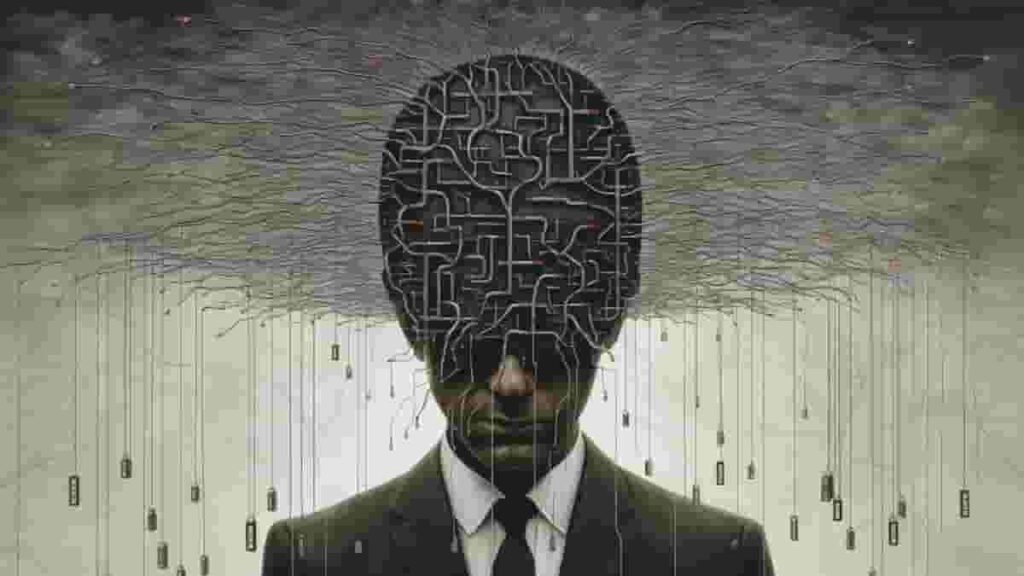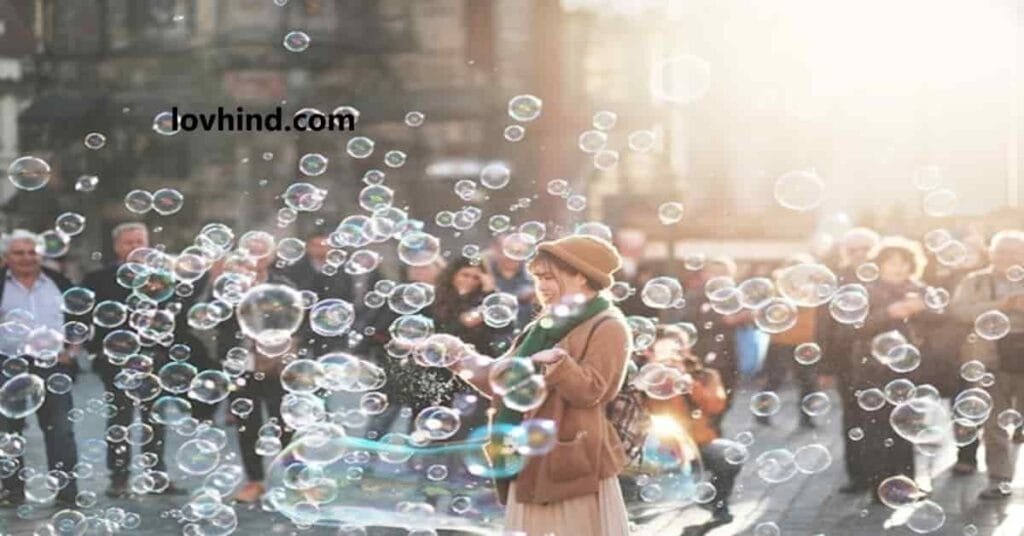Why We Fight? Human history is tragically punctuated by conflict. From small-scale arguments between neighbors to global wars involving entire nations, fighting, in its various forms, is a persistent and disturbing feature of our existence. Understanding why people fight each other is not merely an academic exercise; it’s crucial for building a more peaceful and cooperative future. The reasons are complex and multifaceted, ranging from deeply ingrained biological drives to sophisticated social and political structures. Let’s delve into some of the key factors contributing to human conflict.
Why We Fight

1. The Primal Instincts: Biology, Evolution, and Aggression
While often debated, the role of our evolutionary history in shaping our propensity for conflict cannot be ignored. From a biological perspective, aggression can be seen as a survival mechanism. Early humans faced constant threats: scarcity of resources, competition for mates, and predation. Those who were more aggressive in defending themselves, their territory, and their offspring were more likely to survive and pass on their genes.
- Competition for Resources: The struggle for limited resources – food, water, land, and shelter – has been a primary driver of conflict throughout history. When resources are scarce, competition intensifies, leading to aggression and violence. Even in modern society, economic inequality and resource depletion can fuel social unrest and conflict.
- Territoriality: The instinct to defend one’s territory is deeply ingrained in many animals, including humans. Territory provides security, resources, and mating opportunities. Encroachments on perceived territory, whether physical or metaphorical, can trigger defensive reactions and aggressive responses. Think of border disputes between countries or even arguments over parking spaces.
- Dominance Hierarchies: Establishing dominance hierarchies is another common behavioral pattern observed in social animals. Individuals compete for status and power within a group, and aggression can be used to establish and maintain one’s position in the hierarchy. In human societies, this can manifest as competition for leadership positions, social status, or economic success, sometimes leading to conflict and rivalry.
It’s crucial to understand that these biological predispositions are not deterministic. They are tendencies, not inescapable fates. Human beings are capable of reasoning, empathy, and cooperation, which can override these primal instincts. However, understanding these underlying drives is essential for addressing conflict effectively.
2. Psychological Factors: Individual Needs and Cognitive Biases
Beyond biological predispositions, psychological factors play a significant role in shaping individual behavior and contributing to conflict.
- Frustration-Aggression Hypothesis: This theory suggests that frustration, resulting from the blockage of goal-directed behavior, can lead to aggression. When individuals are prevented from achieving their desired outcomes, they may experience anger and resentment, which can manifest as aggressive behavior. Examples include feeling trapped in poverty, experiencing discrimination, or facing bureaucratic obstacles.
- Social Learning Theory: This theory posits that aggressive behavior is learned through observation and imitation. Children who witness violence, either at home or in their communities, are more likely to adopt aggressive behaviors themselves. Exposure to violent media can also contribute to this learning process.
- Cognitive Biases and Stereotyping: Cognitive biases are systematic patterns of deviation from the norm or rationality in judgment. They can lead to misinterpretations of events and biased perceptions of others, contributing to prejudice and discrimination. Stereotyping, a specific type of cognitive bias, involves generalizing about entire groups of people based on limited information, often leading to negative perceptions and hostility. These biases can fuel intergroup conflict and prejudice.
- Identity and Belonging: Humans have a fundamental need to belong and identify with a group. This sense of belonging provides social support, purpose, and a sense of self-worth. However, the desire to protect one’s group identity can lead to in-group bias and out-group prejudice. This can manifest as ethnocentrism, nationalism, or religious intolerance, all of which can contribute to intergroup conflict.
- Need for Self-Esteem: The need to feel good about oneself can also contribute to conflict. When individuals feel threatened or insecure, they may resort to aggression to protect their self-esteem or assert their dominance. Bullying, for example, is often motivated by a desire to feel superior to others.
3. Social and Cultural Influences: Norms, Values, and Institutions
Social and cultural factors exert a powerful influence on individual behavior and can significantly contribute to the likelihood of conflict.
- Cultural Norms and Values: Different cultures have different norms and values regarding aggression and violence. Some cultures may emphasize competition and dominance, while others prioritize cooperation and harmony. These cultural norms can shape individuals’ attitudes towards conflict and influence their behavior in social situations. Cultures that glorify war or violence are more likely to experience higher levels of conflict.
- Social Institutions: Social institutions, such as the legal system, education system, and media, play a crucial role in shaping individual behavior and promoting social order. However, when these institutions are weak, corrupt, or biased, they can exacerbate social inequalities and contribute to conflict. For example, a corrupt legal system may fail to provide justice for all, leading to resentment and unrest.
- Power Structures and Inequality: Unequal distribution of power and resources can create social tensions and lead to conflict. When certain groups are systematically disadvantaged or marginalized, they may resort to violence or protest to challenge the existing power structure.
- Political Ideologies: Political ideologies, such as nationalism, fascism, and communism, can be powerful drivers of conflict. These ideologies often promote a particular worldview and can justify violence in the name of achieving political goals. They often rely on “us vs. them” narratives, demonizing opposing groups and fostering hostility.
- Historical Grievances: Historical injustices, such as colonialism, slavery, and genocide, can have lasting impacts on social relations and contribute to ongoing conflict. Unresolved grievances and lingering resentments can fuel cycles of violence and revenge.
4. Economic Factors: Scarcity, Inequality, and Exploitation
Economic factors are often intertwined with other causes of conflict, exacerbating existing tensions and creating new sources of friction.
- Economic Inequality: Large disparities in wealth and income can create social divisions and lead to resentment and unrest. When a significant portion of the population lacks access to basic necessities, such as food, housing, and healthcare, they may feel disenfranchised and resort to violence to demand change.
- Scarcity of Resources: As mentioned earlier, competition for scarce resources, such as water, land, and energy, can be a major driver of conflict. Climate change, population growth, and unsustainable consumption patterns are exacerbating resource scarcity in many parts of the world, increasing the risk of conflict.
- Economic Exploitation: Economic exploitation, such as unfair trade practices, labor exploitation, and resource extraction, can create grievances and lead to conflict. When certain groups benefit from the exploitation of others, it can fuel resentment and create a climate of injustice.
- Competition for Economic Opportunities: The pursuit of economic opportunities, such as jobs, markets, and investments, can also lead to conflict. Competition for these opportunities can intensify social tensions and create winners and losers.
5. The Role of Information and Misinformation: Propaganda, Rumors, and the Internet
In the modern era, information and misinformation play an increasingly important role in shaping perceptions and influencing behavior, often contributing to conflict.
- Propaganda: Propaganda is the deliberate dissemination of biased or misleading information to influence public opinion. It is often used to demonize enemies, justify violence, and mobilize support for war.
- Rumors and Conspiracy Theories: Rumors and conspiracy theories can spread rapidly, especially in times of uncertainty and crisis. These narratives can exploit existing fears and prejudices, fueling distrust and animosity.
- The Internet and Social Media: The internet and social media have revolutionized communication, but they have also created new opportunities for spreading misinformation and inciting hatred. Online echo chambers can reinforce existing biases and create polarized communities, making it more difficult to bridge divides.
Moving Towards Peace: Strategies for Conflict Resolution
Understanding the multifaceted causes of conflict is essential for developing effective strategies for conflict resolution and prevention. No single solution exists, but a comprehensive approach that addresses the underlying drivers of conflict is crucial.
- Promoting Economic Development and Reducing Inequality: Addressing economic inequality and promoting sustainable economic development can reduce poverty, create opportunities, and foster social stability.
- Strengthening Social Institutions and Promoting Good Governance: Building strong and accountable institutions, such as the legal system, education system, and media, can promote justice, fairness, and transparency.
- Promoting Education and Critical Thinking: Investing in education and promoting critical thinking skills can empower individuals to make informed decisions and resist manipulation.
- Facilitating Dialogue and Reconciliation: Creating opportunities for dialogue and reconciliation between conflicting parties can help to build trust, address grievances, and foster understanding.
- Promoting International Cooperation and Diplomacy: Strengthening international cooperation and diplomacy can help to prevent and resolve conflicts peacefully.
- Addressing Climate Change and Resource Scarcity: Taking action to address climate change and promote sustainable resource management can reduce competition for scarce resources and mitigate environmental conflicts.
- Combating Misinformation and Promoting Media Literacy: Promoting media literacy and combating the spread of misinformation can help to prevent the manipulation of public opinion and reduce the likelihood of conflict.
Ultimately, achieving a more peaceful and cooperative world requires a concerted effort to address the root causes of conflict and promote understanding, empathy, and respect for human dignity. It’s a long and complex journey, but one that is essential for the survival and well-being of our species. Only by understanding why we fight can we hope to build a future where peace prevails.
Why We Fight | Why We Fight | Why We Fight | Why We Fight | Why We Fight


